
Heilongjiang, as an administrative entity, was created in 1683, during the Kangxi Reign of the Qing Dynasty (1644–1911). The Longquanfu site, Shangjing City, a top cultural relic from the Bohai State (750 AD to 926 AD), offered important clues for the study of the relationships between local and Tang cultures. Heilongjiang has 29 immovable cultural relics registered under state protection.

Jilin, located in the northeastern part of China, was inhabited by various ethnic groups in ancient times and it successively came under the rule of the Liao, Jin, Yuan, Ming and Qing Dynasties. Its famous cultural relics include the Ancient Tombs on Liuding Mountain. Jilin now has 33 immovable cultural relics registered under state protection.
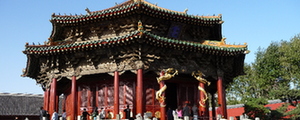
Located in the northeast of China, Liaoning Province is famous for serving as the cradle of the Qing Dynasty (1644–1911). It has a large amount of valuable cultural relics such as the Shenyang Imperial Palace, the palace of the Qing Dynasty emperors before they conquered the rest of China and moved their capital to Beijing. Liaoning counts 52 immovable cultural relics registered under state protection.

Beijing is the capital of China. Together with Xi'an, Luoyang and Nanjing, the city is one of the four great ancient capitals of China. Due to its extensive history, it boasts a myriad of opulent palaces, temples and other cultural heritages such as the world famous Great Wall and the Forbidden City. It currently has 98 immovable cultural relics registered under state protection.

Tianjin, a municipality near Beijing, has a history of over 600 years since it was built in 1404 during the Ming Dynasty (1368-1644). It is also one of the earliest coastal cities that opened its doors to the outside world. Tianjin is home to a large number of ancient temples as well as western-style buildings, including Wenmiao (Confucian Temple) and Wanghailou Catholic Church. The city now possesses 14 immovable cultural relics registered under state protection.

Hebei also goes under the name of Yanzhao, after the Yan and Zhao states that existed here during the Warring States Period. The province’s glorious history left the world with a number of famous historical relics, including the Shanhai Pass, Chengde Mountain Resort and Anji (Zhaozhou) Bridge. It now has 163 immovable cultural relics registered under state protection.
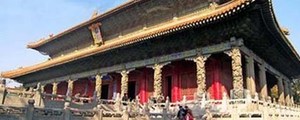
Shandong, a coastal province in eastern China, features an extensive history. It is the hometown of Confucius, the father of the philosophical school of Confucianism and one of China's great thinkers. Numerous historic palaces, temples and cemeteries were constructed in the area over time, including San Kong, a UNESCO World Heritage Site since 1994. Shandong now has 95 immovable cultural relics registered under state protection.

Located along the east coast of China, Jiangsu boasts a grand history. Nanjing City, the capital of Jiangsu, is recognized as one of the four great ancient capitals of China. Suzhou City in Jiangsu is famous for its gardens, such as the striking Lingering and Zhuozheng Gardens. Jiangsu now has 119 immovable cultural relics registered under state protection.
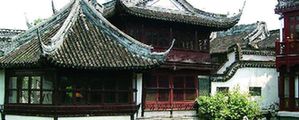
Shanghai is one of the largest city in China with a history of over 700 years/ During the Spring and Autumn Period (770 BC - 476 BC), it was part of the then Wu State. During the Qing Dynasty, Shanghai became one of the most important sea ports in the Yangtze Delta region. The city’s main culture relics include the Main Hall of the Zhenru Temple and the Longhua Pagoda. Shanghai now has 19 immovable cultural relics registered under state protection.

Zhejiang, a coastal province in eastern China, is known for its historical glory, which can be traced back to the Paleolithic period of 50,000 years ago. The area was also home to several Neolithic cultures of which the remains can still be found scattered across 100 sites. Two examples are the Shanshang Culture of 11,400 to 8,400 years ago, and Hemudu culture of 7,000 years ago. Among the province's 1,200 scenic spots, 130 were selected to be registered as immovable cultural relics under state protection.

Across the basins of the Yangtze River and the Huai River in eastern China, Anhui features several World Heritage Sites, including the Xidi and Hongcun Villages, China's most beautiful villages, as well as the Site of the Hexian ape man. The latter belonged to a culture that occupied the area some 350,000 years ago. Anhui now has 56 immovable cultural relics registered under state protection.

The history of Jiangxi can be traced back 10,000 years ago, according to the province’s unearthed cultural relics. Located in southern China, Jiangxi features scores of renowned historical sites such as the Pavilion of Prince Teng, one of the four great towers of China. The province now has 51 immovable cultural relics registered under state protection.

Located on the southeast coast of China, Fujian is rich in folk culture. "Min", a colloquial reference to Fujian Province, first appeared during the Zhou Dynasty (1046 BC - 256 BC). Many of the area's culture relics have set records in China. For example, Fujian possesses the oldest stone pagoda in China, the Zhenguo Pagoda, built during the Song Dynasty. The province now has 85 immovable cultural relics registered under state protection.

Located in the coastal area in southern China, Guangdong boasts a roaring economy as well as abundant cultural sights. Chinese administration in the region began with the Qin Dynasty (221 BC to 206 BC). Notable historical attractions include Guangxiao Temple, Kaiyuan Temple in Chaozhou City and Yunlong Temple Pagoda. It now has 66 immovable cultural relics under state protection.

Hainan, an island province located in South China, is home to 14 immovable cultural relics under state protection. The most famous of them are the Tomb of Hai Rui and the Five Officials Temple.

Located in Southern China, the Guangxi Zhuang Autonomous Region boasts a variety of cultural relics, including Lingqu Canal and Huashan Cliff Paintings, which have been placed on the UNESCO World Heritage Site tentative List. Guangxi now has 42 immovable cultural relics under state protection.

Located in the far southwest of China, Yunnan is home to the Yuanmou Man, which is a Homo erectus fossil unearthed in Yunnan and has been determined to be the oldest known hominid fossil in China. In 221 BC, Qin Shi Huang unified China and established counties in Yunnan. The splendid history left a large amount of precious cultural relics, including the Pujian Temple, Three Pagodas and Cuanbaozi Stele. The province now has 76 immovable cultural relics under state protection.

Located in the southwestern part of China, Guizhou is one of the birthplaces of ancient humans. The Chuandong Culture Site in Puding County proved that people lived there about 16,000 years ago. Guizhou was established as a province in the 11th year of Yongle Reign (1413) of Ming Dynasty. The long history left numerous cultural relics, such as the Ninggu Site, Dadong Site and Wulong Temple in Tiantai Mountain. It now has 39 immovable cultural relics under state protection.

Located south of the middle reaches of the Yangtze River and south of Lake Dongting, Hunan had its first settlers in the Paleolithic era of 400,000 years ago. Its written history can be traced back to 350 BC, when under the kings of the Zhou Dynasty, it became part of the State of Chu. It boasts a large number of historical sites, including Xizhou Copper Pillar and Longxing Temple. It now has 60 immovable cultural relics under state protection.

Chongqing, a major city in Southwest China, boasts a large amount of world famous cultural relics, including the well-known Beishan Cliffside Statues and Baoding Mountain Cliffside Statues. It now has 20 immovable cultural relics under state protection.

Hubei, in Central China, carries the popular name of "Chu", after the powerful state of Chu that existed here during the Eastern Zhou dynasty (770 BC - 256 BC). A long and splendid history gives the province abundant cultural attractions, including the Yellow Crane Tower, Jingzhou City Wall, Xianling Mausoleum of the Ming Dynasty and the Ancient Building Complex in the Wudang Mountains. It now has 91 immovable cultural relics under state protection.

Henan, in Chinese often referred to as Zhongyuan, is located in the central part of the country. It is one of the birthplaces of Chinese civilization with over 5,000 years of history, and remained China's cultural, economical, and political center until approximately 1,000 years ago. The area features many renowned cultural heritages, including the Shaolin Temple, Yinxu Ruins and Longmen Grottoes. At present Henan has 189 immovable cultural relics registered under state protection.
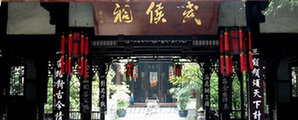
Located in the southwest of China, Sichuan features a long history and abundant cultural relics. The unearthed Sanxingdui Site represents the splendid culture and ancient civilization of the Shu (Today Chengdu) Kingdom from 3,000 to 5,000 years ago. It is also home to the Leshan Giant Buddha, and Dujiang Dam. Sichuan now has 127 immovable cultural relics under state protection.
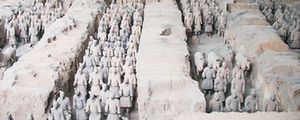
Shaanxi, located in the northwest China, is considered one of the cradles of Chinese civilization. The capital Xi'an served as the capital for thirteen dynasties over a span of more than 1,100 years, from the Zhou Dynasty (1046–256 BC) to the Tang Dynasty (618 – 907), making it one of the four ancient capitals of China. Shananxi boasts many world famous cultural sites, including the Terracotta Army, the Xi'an Forest of Stone Tablets and Maoling Mausoleum. The province now has 138 immovable cultural relics under state protection.

Shanxi, located in northern China, is regarded as one of the birthplaces of Chinese civilization as it was once home to the Xihoudu and Dingcun Sites, the early and middle Paleolithic Age cultures of northern China. It features an extremely long history and the written history of the area can be traced back 3,000 years ago. It now has 271 immovable cultural relics registered under state protection, which is the highest total number of immovable cultural relics in a province or municipality.

Located in Northwest China, on the Loess Plateau, Ningxia is the home of the Hui people. Li Yuanhao, leader of the Dangxiang ethnic group, established Western Xia Dynasty in 1028, which informed unique Western Xia culture. Famous attractions include the Western Xia Tombs, Haibao Pagoda and Helan cliff paintings. It now has 18 immovable cultural relics under state protection.
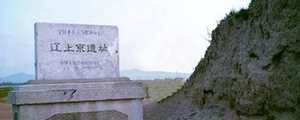
Inner Mongolia is located in northern China. The area is homes to a large amount of precious cultural and historical relics, including Shangjing city, Liao and Zhongjing, Liao. The Daming Pagoda in Zhongjing has 80.22 meters high and 133 meters in perimeter, which is the biggest Liao Dynasty (907-1125) pagoda in size. Inner Mongolia now has 77 immovable cultural relics registered under state.

Located in the northwest of China, the name of Gansu was first used during the Song Dynasty (960–1279). In imperial times, Gansu was an important strategic outpost and communications link for the Chinese empire, as the Hexi corridor runs along the "neck" of the province. It is also one of the most important sections of the silk route. It is home to numerous amazing scenic spots, including the Jiayuguan Pass of the Great Wall, Mogao Grottoes and Labrang Monastery. It now has 71 immovable cultural relics under state protection.

Located in the west of China, Qinghai got its name because of the Qinghai Lake, the largest saltwater lake in China. Qinghai is largest residing area for the Hui ethnic group and boasts abundant folk culture. Notable cultural relics include Kumbum Monastery (Ta'er Monastery), Qutan Temple and Longwu Temple. It now has 18 immovable cultural relics under state protection.

Located in the Southwest of China, the Tibet Autonomous Region features a splendid culture. Notable cultural sites include the Potala Palace, Jokhang Temple and Tombs of Tibetan Kings. The region now has 35 immovable cultural relics under state protection.
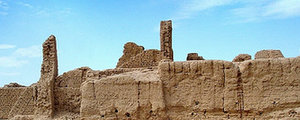
Located in the northwest of China, Xinjiang was known as xiyu, or the western regions, in ancient times and was a key link along the Silk Road and remained a center of the confluence of many different cultures. Xinjiang's unique culture and splendid history has left the region with rich cultural heritages, which include ancient cities, mausoleums among others. It now has 58 immovable cultural relics under state protection, including the famous Ancient Gaochang City.


